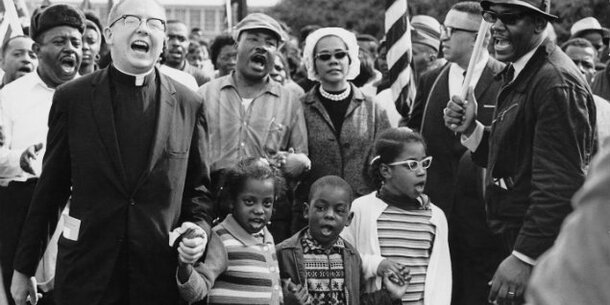In 2013, the U.S. Supreme Court issued its decision in Shelby County v. Holder, striking down the Voting Rights Act’s formula for determining which states and localities should be required to get federal approval for before making changes to voting policies. Kareem Crayton, the Brennan Center’s senior director of voting rights and representation, discusses the harmful effects of that ruling and ways to mitigate the damage.
What happened to the Voting Rights Act?
Chief Justice John Roberts justified gutting the Voting Rights Act in the Shelby County case by pointing to representational and participation gains by communities of color across the country. Many of us argued that doing so was a reckless gamble and that, without the protections provided by the landmark voting law, voter suppression targeting these communities would accelerate. Ample evidence from the last decade has shown that we were right.
Several of the states once covered by the Voting Rights Act’s preclearance rules — which required states with an established pattern of discrimination to obtain federal permission before altering voting rules — have reduced or eliminated features that improved minority participation, like same day registration and early voting. The first round of redistricting since Shelby County ignored the interests of growing nonwhite populations. And court decisions after Shelby County, like Brnovich v. Democratic National Committee, either created hurdles for plaintiffs to prove voting rights infringements or increased the wait time for effective remedies to take hold.
Has Shelby County changed voting patterns?
The most disturbing result of Shelby County is that the turnout gap has grown between white voters and voters of color throughout the country, which represents hundreds of thousands of missing voices in our democracy. We spent much of the last year doing pathbreaking research on this very question. Senior Research Fellow Kevin Morris compiled a database with 1 billion pieces of data. We believe it is the most comprehensive pool of voter records in the country. It shows that the racial turnout gap has increased nationwide since 2013. However, in preclearance jurisdictions, the gap has grown twice as fast. This finding suggests strongly that Shelby County made things far worse in much of the country.
How can we level the playing field for voter participation?
The Brennan Center has advocated for two crucial pieces of federal legislation to counter Shelby County’s negative effects. The John R. Lewis Voting Rights Advancement Act includes a retooled oversight system and expands the mechanisms available for voting rights attorneys to vindicate the franchise. The Freedom to Vote Act, another pivotal legislative proposal, is designed to fight gerrymandering by developing a better, more uniform district-drawing process that helps assure that the interests of voters and not those of politicians drive election outcomes.
States across the country are also establishing local voting rights act provisions that can help to avoid decision-making that, whether purposeful or not, denies minority communities a fair shot at electing representatives that respond to their needs.
What about 2024 . . . is there anything we can do right now?
We must make sure we have a free and fair election process that promotes public confidence. To make that happen, we need to work with election officials, voters, and legislatures to protect both the polling place and the people casting their ballots. That means guaranteeing accessible and safe polling sites, ensuring that voters and poll workers understand the applicable rules and laws, and, when necessary, holding people accountable when they choose to disrupt the secure functioning of this process.
Are you hopeful?
To paraphrase a fellow voting rights attorney: without the preclearance system, we are working hard just to stay above water. The absence of Section 5 of the Voting Rights Act is forcing us to use our energy to stop backsliding wherever possible rather than moving law and policy forward.
I have spent my career of scholarship and advocacy working to make voting equally accessible to all and to ensure that voters have the opportunity to elect candidates who will represent their communities’ interests and respond to their needs. It is of course terribly frustrating — even if it was predictable — to see how Shelby County has increased the racial turnout gap. But it is also important to remember that the Voting Rights Act took several attempts to pass before 1965. These present challenges reinforce the need to continue to fight for reforms, and I am certain that we have developed clear ways to push for and implement the necessary changes.



